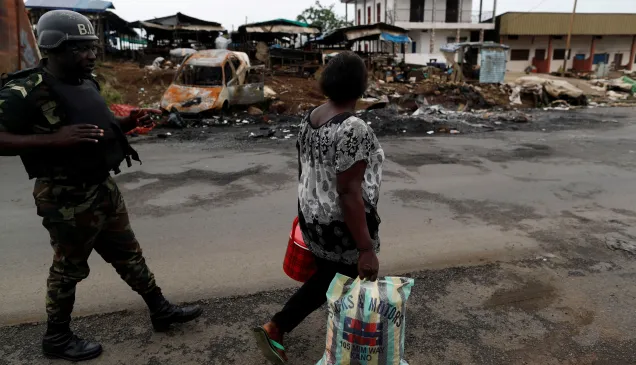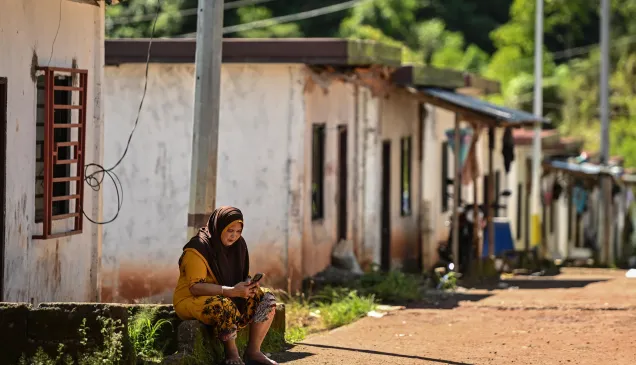Philippines: Rebuilding lives in Zamboanga community
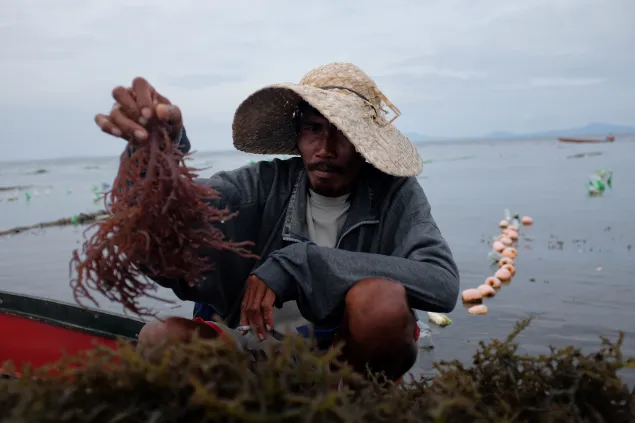
Seaweed farming is the primary source of income for most families in Layag-Layag. Men learn the tricks of the trade early in life and pass it on to the next generation. Hussein started helping out his father when he was 19 years old. Now, his sons are helping earn the family's keep by joining him at sea.
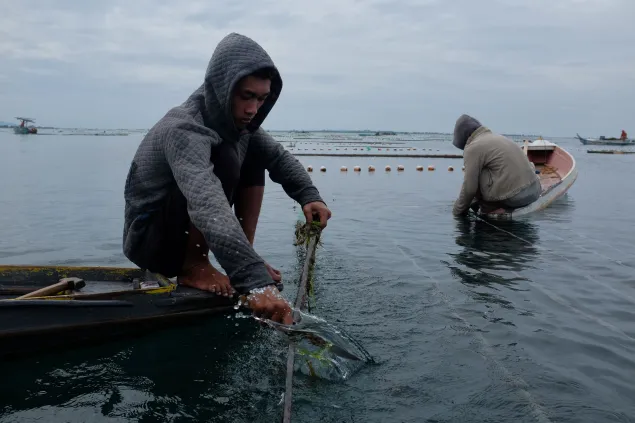
Layag-Layag, Zamboanga
Unlike with other crops, seaweed farming can be done all-year round. It takes a month after planting for the seedlings to mature. In this photo, a farmer removes moss from the binder where the seedlings will be tied.
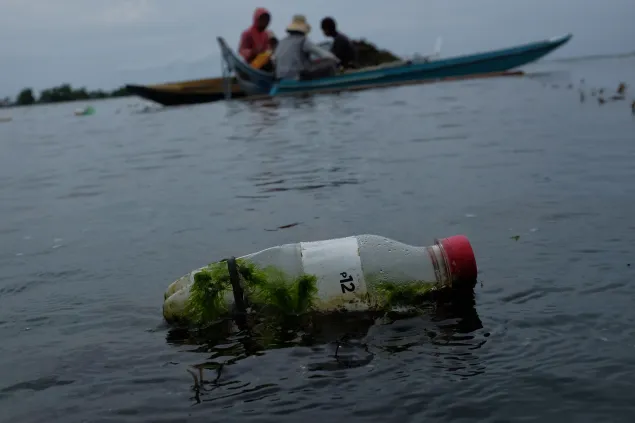
Layag-Layag, Zamboanga
Recycled plastic bottles are used as floaters where lines of seaweeds are tied. Farmers buy these in bulk from junk shops in the city.
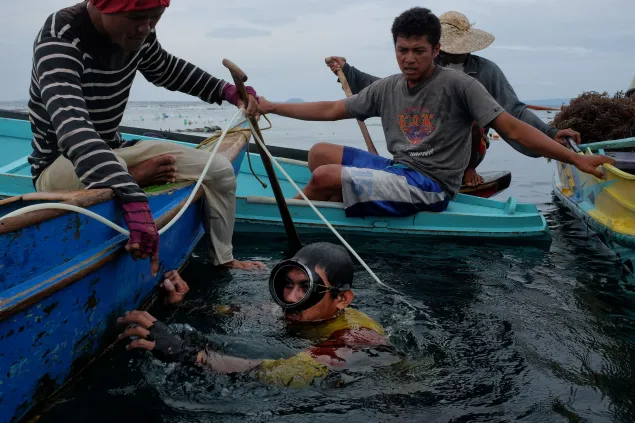
Layag-Layag, Zamboanga
A group of young seaweed farmers makes use of a compressor that supplies air while they dive and gather loose seaweeds or those that have fallen off from the lines. One of them is 25 years old Arman Sali who started using the compressor when he was only 13 years old. "One compressor usually lasts for more than two hours underwater," he explains.
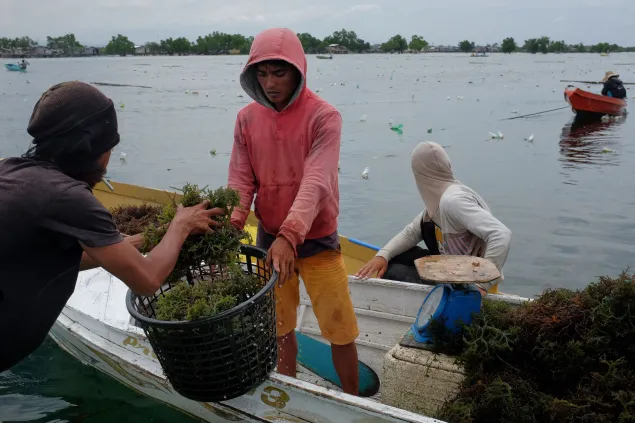
Layag-Layag, Zamboanga
Seaweed farmers with smaller boats often sell their harvest to those with bigger boats while still at sea. Those without a space for drying their harvest usually sell their product while it is still fresh at a much lower value.
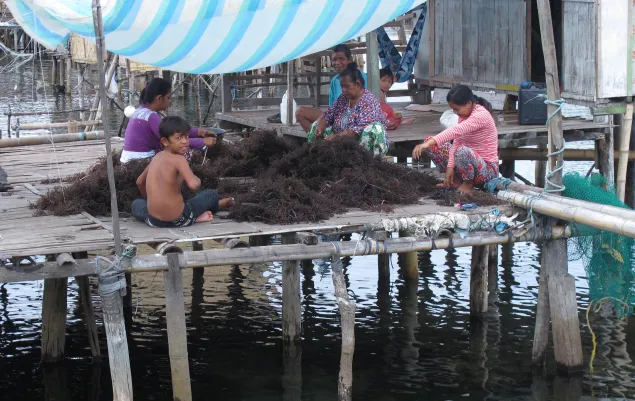
Layag-Layag, Zamboanga
In the small village of Layag-Layag, seaweed farming is a family affair. Planting and harvesting are tasks usually reserved for the men, while the women and children stay at home preparing the seedlings for planting by tying them in bundles.
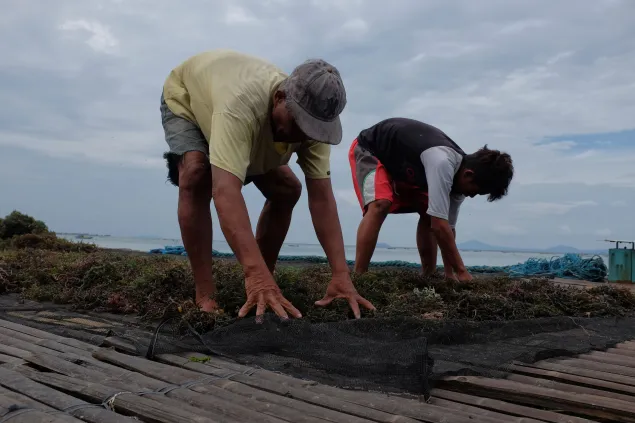
Layag-Layag, Zamboanga
Most families have a small space in their homes for drying seaweeds. Having a larger area for drying significantly increases the income of farmers as dried seaweeds can be sold for 80 percent more than fresh ones.
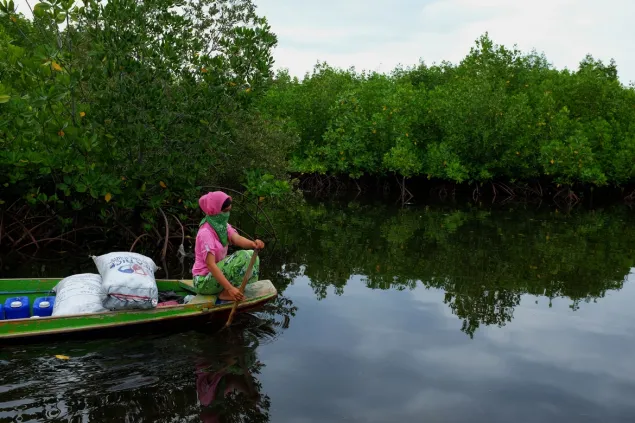
Layag-Layag, Zamboanga
Located in the southern coast of Zamboanga City, Layag-Layag is a small village separated from the city by a dense layer of mangroves. Families, belonging to the Tausug tribe, use boats to get their supply of food and drinking water from the mainland.
The villagers in the coastal community of Layag-Layag, in Zamboanga City, depend on seaweed farming for their income. When the fighting broke out in September 2013, they were among the first to be affected – families were displaced and livelihoods were lost. To help them start over, we supported the construction of a community solar stilt drier through a cash-for-work activity for the seaweed farmers.

